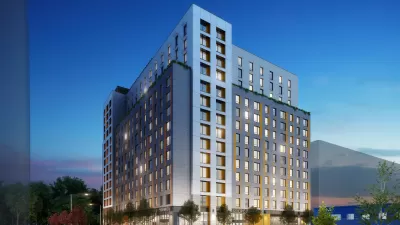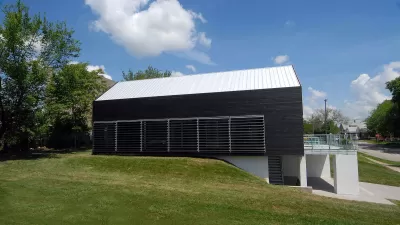From Passive House design to a broader range of amenities, affordable housing developers are finding new ways to make housing more efficient, comfortable, and flexible for residents.

In an article for Building Design & Construction, Quinn Purcell highlights the ten most relevant trends in affordable housing development. “Among affordable housing developers today, there’s one commonality tying projects together: uncertainty.”
Passive House design takes the top spot, signaling the growing importance of sustainability in building practices. “In today’s affordable housing landscape, request for proposals (RFPs) are identifying a desire for net zero operational, Passive House, and WELL building standards—more than just green design.”
Builders are also including more amenities that recognize the need for outdoor space and community areas. “Across the board, we’re seeing an increase in amenities that were once considered market-rate. Rooftop spaces, outdoor recreation, and courtyards are increasingly common (especially since the Coronavirus pandemic brought more people to the outdoors).”
Affordable housing is also a prime candidate for Trauma-Informed Design (TiD), an approach that uses thoughtful design to create an environment of safety and security. Similarly, developers are moving toward mixed-use projects, higher density, and heightened connectivity to the local community and transit hubs.
In addition to trends in architecture and design, the article also highlights regulatory challenges and trends such as lengthy project timelines and a growing interest in combining various local, state, and federal incentives and credits to make projects financially viable.
FULL STORY: Top 10 trends in affordable housing

Planetizen Federal Action Tracker
A weekly monitor of how Trump’s orders and actions are impacting planners and planning in America.

Congressman Proposes Bill to Rename DC Metro “Trump Train”
The Make Autorail Great Again Act would withhold federal funding to the system until the Washington Metropolitan Area Transit Authority (WMATA), rebrands as the Washington Metropolitan Authority for Greater Access (WMAGA).

The Simple Legislative Tool Transforming Vacant Downtowns
In California, Michigan and Georgia, an easy win is bringing dollars — and delight — back to city centers.

The States Losing Rural Delivery Rooms at an Alarming Pace
In some states, as few as 9% of rural hospitals still deliver babies. As a result, rising pre-term births, no adequate pre-term care and harrowing close calls are a growing reality.

The Small South Asian Republic Going all in on EVs
Thanks to one simple policy change less than five years ago, 65% of new cars in this Himalayan country are now electric.

DC Backpedals on Bike Lane Protection, Swaps Barriers for Paint
Citing aesthetic concerns, the city is removing the concrete barriers and flexposts that once separated Arizona Avenue cyclists from motor vehicles.
Urban Design for Planners 1: Software Tools
This six-course series explores essential urban design concepts using open source software and equips planners with the tools they need to participate fully in the urban design process.
Planning for Universal Design
Learn the tools for implementing Universal Design in planning regulations.
Smith Gee Studio
City of Charlotte
City of Camden Redevelopment Agency
City of Astoria
Transportation Research & Education Center (TREC) at Portland State University
US High Speed Rail Association
City of Camden Redevelopment Agency
Municipality of Princeton (NJ)





























